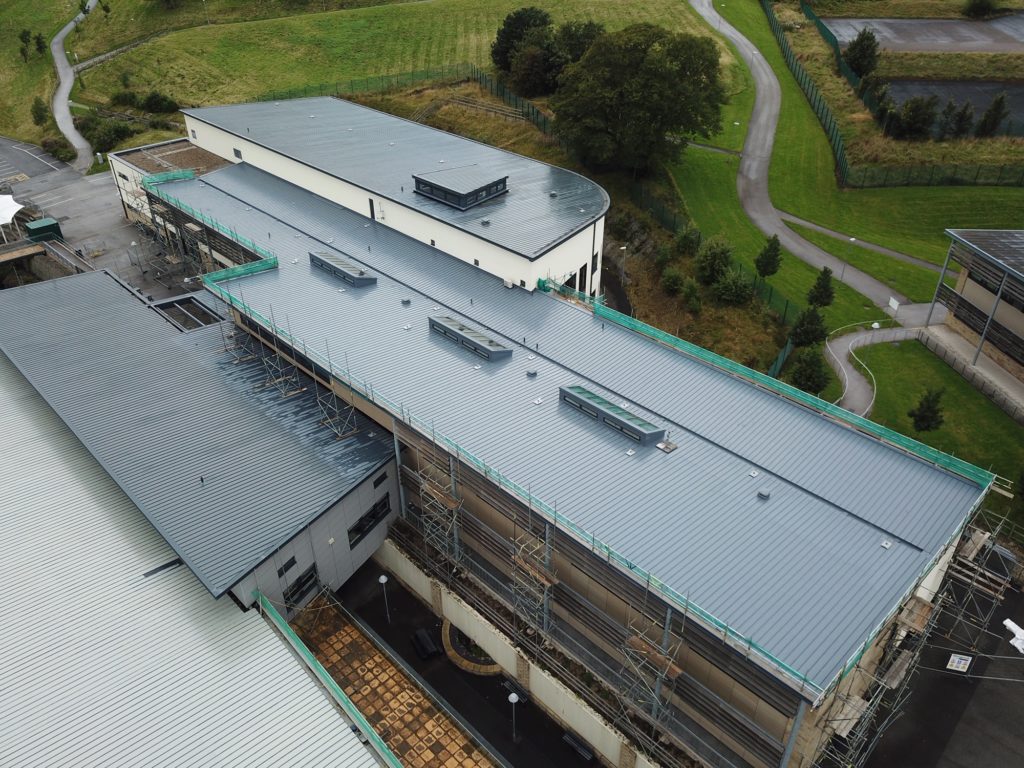
Neil Humphries, metal roofing specialist for Sika Liquid Plastics’ Sika Pro-Tecta range discusses specification considerations for metal roof remediation projects
HARDWEARING and long-lasting, metal roofs are a popular choice for many types of buildings. The metal sheets offer excellent weatherproofing and corrosion resistance, even for the most challenging conditions. However, when corrosion does occur, it must be addressed with an appropriate metal roofing system.
For many roofs in the early stages of corrosion, a cut-edge corrosion metal roofing system may be sufficient to treat the affected areas and prevent further damage. Often, however, a full waterproofing system is required and it’s important to work with a supply chain partner that can provide expert advice on the most appropriate approach for the project.
Corrosion Risk
The metal sheets used to construct metal roofs are produced in long strips and cut to size. The cut edge of the sheet is the area that is most vulnerable to corrosion and this is sprayed with a protective layer to seal it. However, driving rain and wear and tear can cause the protective layer to peel away, exposing the untreated metal edge to moisture and the risk of corrosion.
It is inevitable that all metal roofs will need maintenance or repairs at some point in their service life but, where the first signs of corrosion are treated early enough and regularly enough, further corrosion can be prevented.
A cut edge corrosion treatment is usually sufficient if surface rust can be manually removed and the integrity of the metal sheet beneath has not been compromised. Following treatment with a suitable system, regular inspections will help ensure any future corrosion risk is managed proactively.
Climate patterns for the building’s location are a risk factor for the resilience of the roof, as is the salinity of the atmosphere. Both can speed up the corrosion process. Consequently coastal areas and locations prone to heavy and driving rain are at increased risk of cut edge corrosion. Here, extra vigilance is required and it’s important to check that the chosen system is suitable for the location.
If the corrosion has penetrated the metal sheets or is likely to be compromise the integrity of the metal roof, a full waterproofing system will be necessary.
Specification Considerations
It is important to work with a supply chain partner that will carry out a full condition survey of the roof and offer expert advice on the most appropriate metal roof system. This should be aligned not only to the physical properties and current condition of the roof, but also to geographical conditions, the function of the building, the planned service life for the building and the level of guarantee required.
Different metal roof structures require varying approaches to cut edge corrosion and waterproofing treatments so the survey must identify the type of metal roof and consider its fundamental properties.
Exposure to a range of different conditions, coatings previously applied as part of refurbishment schemes and surface contamination can all affect the level of adhesion that can be achieved by a metal roofing system. Consequently, along with an understanding of both the roof surface and the roof structure, adhesion testing should be carried out as part of the condition survey to ensure that the proposed system will adhere effectively to the roof and deliver its intended service life.
The survey should not only consider the condition of the roof on the external face but should also include an inspection of the internal roof structure and the activity within the building. This is because condensation due to moisture inside the building could become trapped within the roof structure if an inappropriate system or installation technique is specified.
Inspection of the fixings should also form and integral part of the condition survey as it’s important to check whether the fixings are in sufficiently good condition to fix the roof to the structure and avoid wind-uplift. Pull out test results will indicate whether fixings need to be replaced, reinforced with a full waterproofing system or can be left untouched as part of a cut edge corrosion treatment.
Proactive Maintenance
Regardless of the type of metal roof or the business case for refurbishment, the use of a specialist cut edge corrosion or metal roof waterproofing system will extend the roof’s service life as part of a proactive maintenance regime. For optimum results, this should be provided as part of a full service offering that includes expert specification, technical support, installation inspections and a choice of guarantees.








